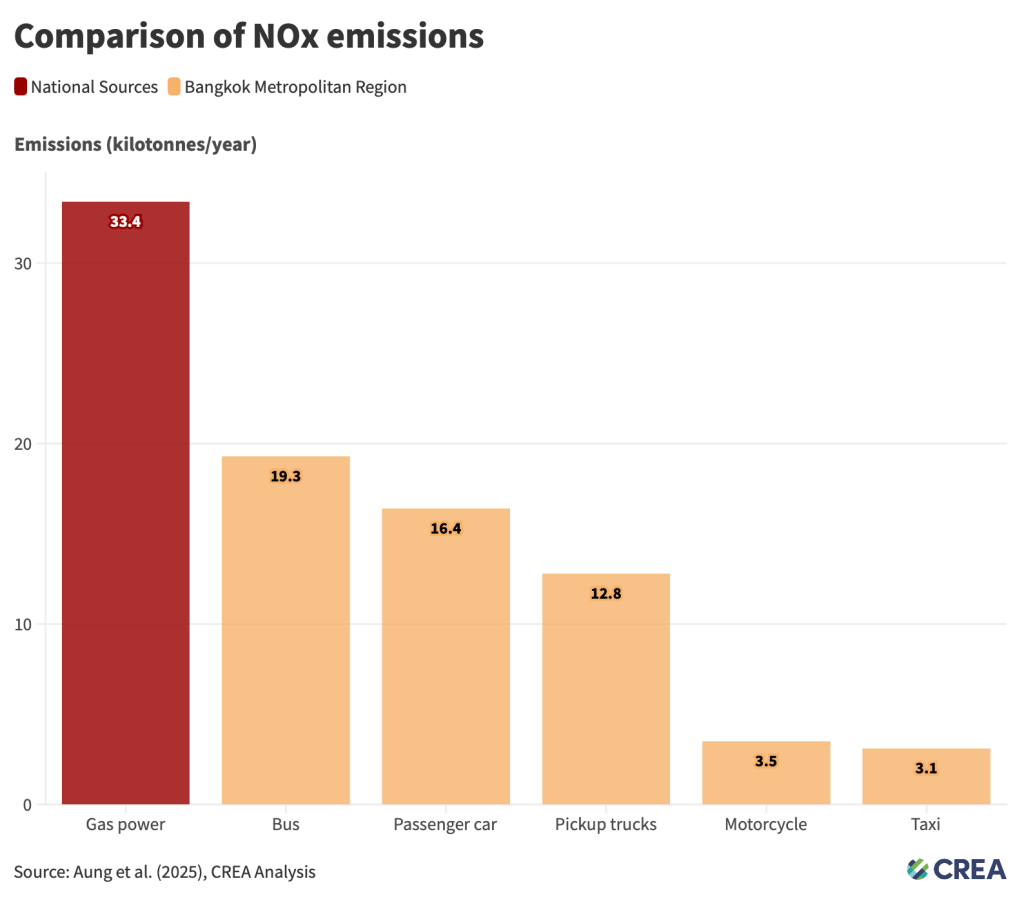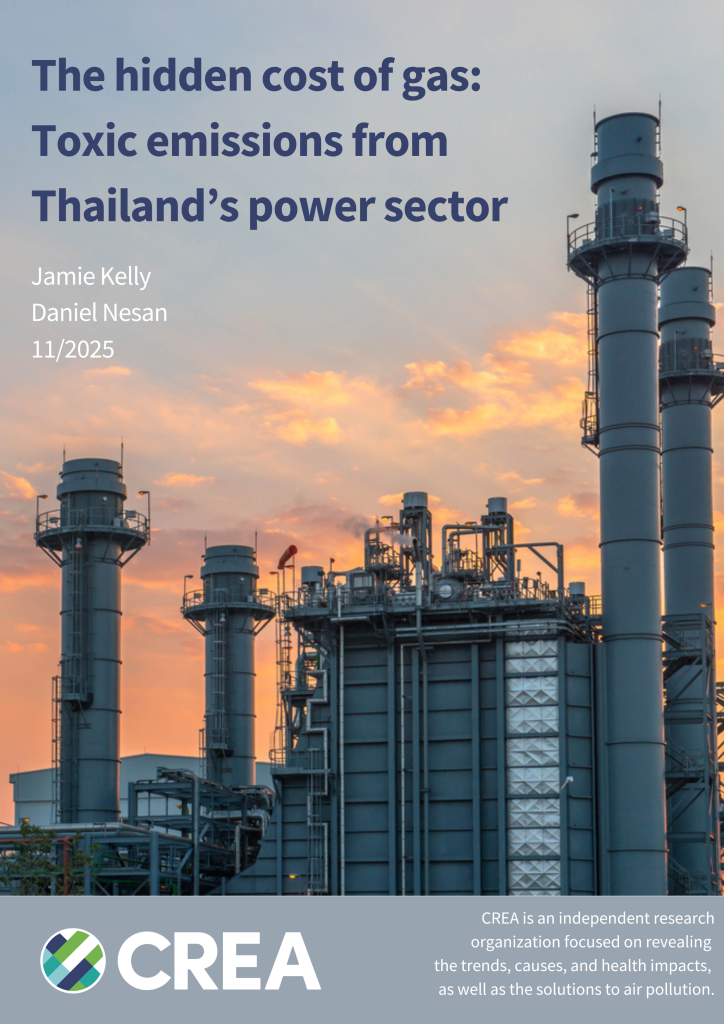Natural gas has long been promoted by power suppliers as Thailand’s reliable, affordable, and cleaner alternative to coal. Over the past two decades, it has become the backbone of the national power system, supplying nearly two-thirds of the country’s electricity. Yet this dominance has come at a growing cost.
Today, the assumptions that power companies once used to justify expanding gas power no longer hold true. Domestic gas reserves are declining, import dependence is rising, and gas-fired electricity is becoming more expensive than renewable alternatives. Moreover, the supposed climate benefits of gas are eroded by methane emissions.
Thailand’s operating and planned gas power plants release large volumes of toxic air pollutants — 30.5 kilotonnes (kt) of nitrogen oxides (NOX), 1.4 kt of sulphur dioxide (SO2), and 1.1 kt of fine particulate matter (PM2.5) every year, once the planned plants are in operation. The majority of these gas plants are clustered around Bangkok, a densely populated city that suffers from major air quality issues, and the Eastern Economic Corridor, exposing millions of people to harmful air pollution.
The NOX emissions from Thailand’s gas power plants exceed the combined emissions from buses, motorcycles, and taxis in Bangkok Metropolitan Region (25.9 kt).
This briefing presents new evidence on the scale and distribution of pollutant emissions from Thailand’s gas power stations, revealing how the country’s reliance on gas undermines both clean air and energy security.

Figure 4 – Comparison of total pollutant emissions (NOX, SO2, PM2.5) from gas power plants estimated in this study, and a comparison to other notable sources, including nationwide biomass burning, as well as transportation in Bangkok Metropolitan Region (BMR) taken from Aung et al. (2025)
